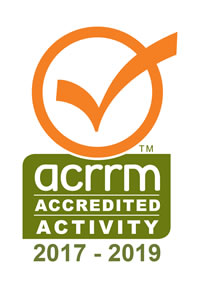Eye Emergencies (1): Assessment/Acute Red Eye/Pharmacology
Please Note : This course has been updated. Enrolements for this course have now closed. To access the new course click the following link to : Go to the Emerg (2) Course Page
Eye Emergencies (1)
Assessment/Acute Red Eye/Pharmacology
Latest Course update: January 2017
Eye emergencies are common presentations to acute care. The causes may vary from minor eye irritation through to severe eye threatening disease or injury. The assessment and management of patients with eye related complaints involves a structured approach to examination that includes visual acuity (the "vital sign" of the eye), macroscopic examination of the eye and surrounding structures and, where available, slit lamp examination of the eye. In this course we begin by taking a detailed look at the procedure for examination of the eye, including use of the slit lamp and then review the red flags that highlight patients at higher risk for serious eye disease or injury.
In this course we will examine the three common clinical presentations of acute eye disease are considered. In the first part of the course we will focus on the "Acute Red Eye" and consider the differential diagnosis, clinical findings and treatment of conditions that may present with this symptom using a series of clinical case discussions.
The final topic in this first course explores the pharmacology of the eye. Many of the medications recommended for treatment of eye conditions are not routinely prescribed and may be less familiar to clinicians. The module examines the indications and contraindications for eye medications used in acute care and briefly reviews of some of the major topics discussed in earlier sections.
The course is divided into the the following five sections:
1. Eye Examination and Red Flags for serious disease
2. Differential diagnosis and treatment of conditions presenting with red eye
3. Pharmacology of eye medications
Information about the course
-
Designed for medical officers, nurses, paramedics, and students in all medical fields
-
CME hours: Certified for 8 hours of continuing medical education
-
CPD accreditation: RACGP, ACRRM
-
Duration of enrolment: 12 months (commences from the date of course enrolment)
-
CPD certificate is provided with successful completion of the course
 Course Accreditation
Course Accreditation
ACRRM
-
-
Course Code: 8612
-
Points Allocation: 30 PRPD Points
-
![]() RACGP
RACGP
-
-
Activity Number: 91188
-
Points Category: Category 1
-
Points Allocation: 40 Points
-
